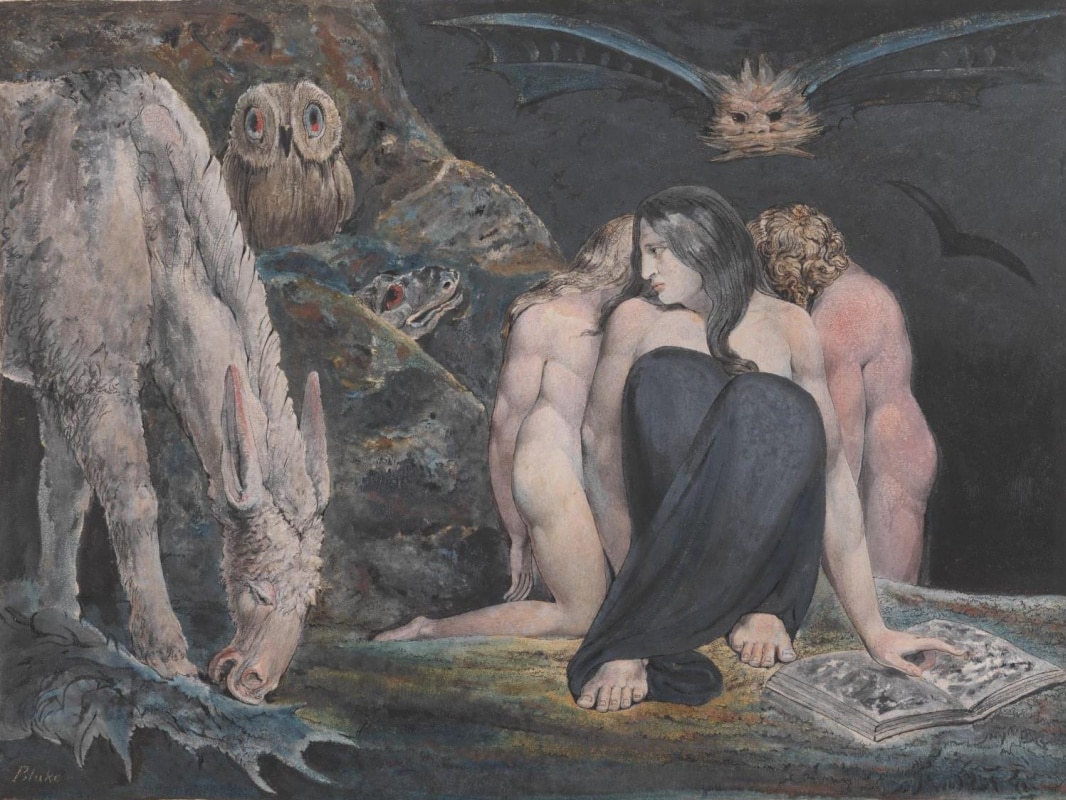1795
The Night of Enitharmon’s Joy
author
William Blake
description
The Tate Gallery Britain, London, the UK.
Watercolour, ink, tempera, paper.
Hecate is an ancient Greek goddess of moonlight, the other world, all mysterious and fantastic, as well as all kinds of magic and witchcraft. She was often called the “goddess of the three roads” and depicted in the form of three figures, tied to each other with their backs and looking in different directions. The mighty and powerful Hecate of William Blake looks somewhat confused or scared: her hand rests on the open Bible, while her gaze is fixed on the serpent peering out from behind the stones. The two other hypostases of the goddess are looking not in different directions but at each other, bashfully bowing their heads, as if they are not participating in what is happening. Obviously, Hecate is about to take some serious choice, and the work itself causes a feeling of understatement, an unresolved conflict, which, perhaps, tormented the author during the creation of the work.
